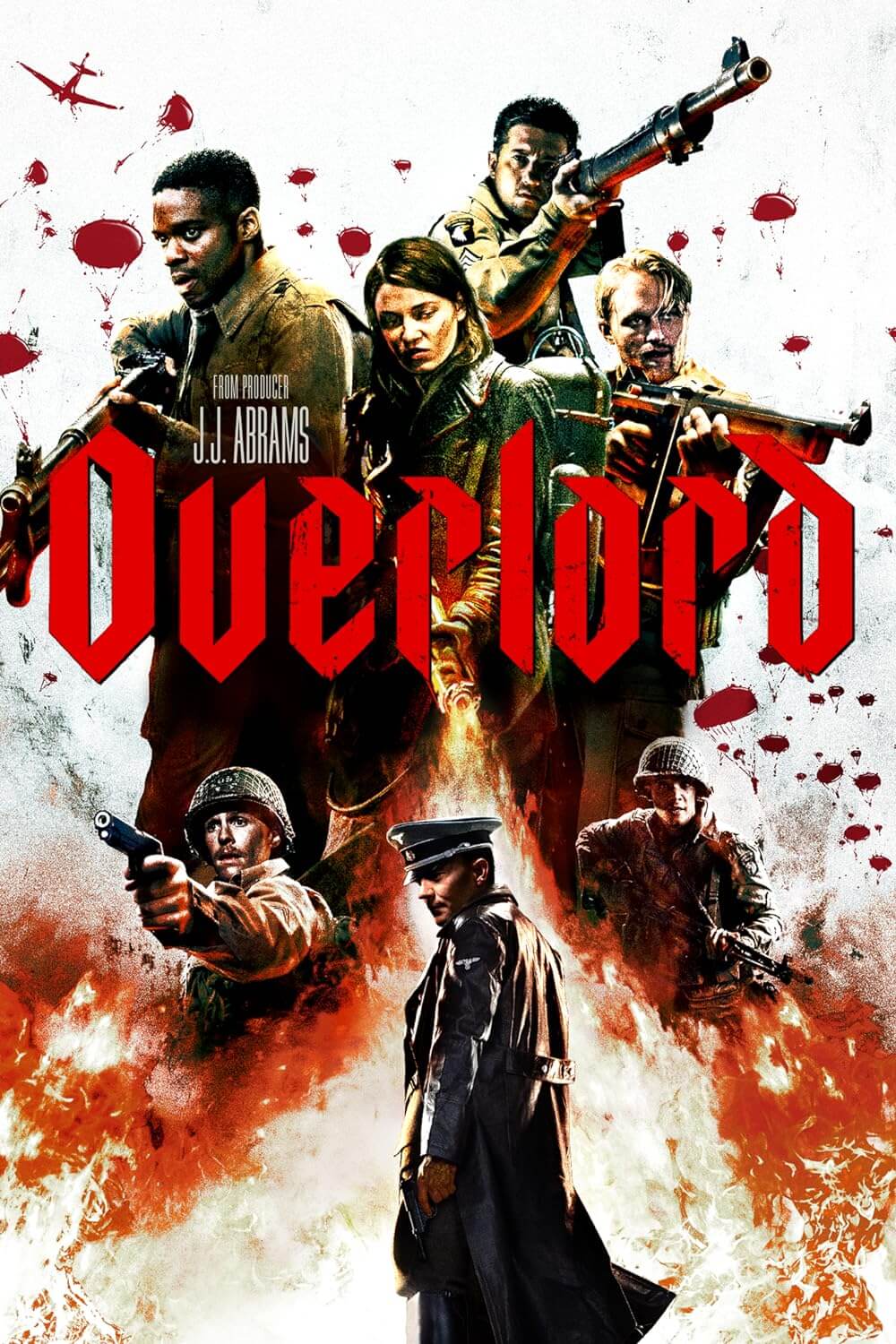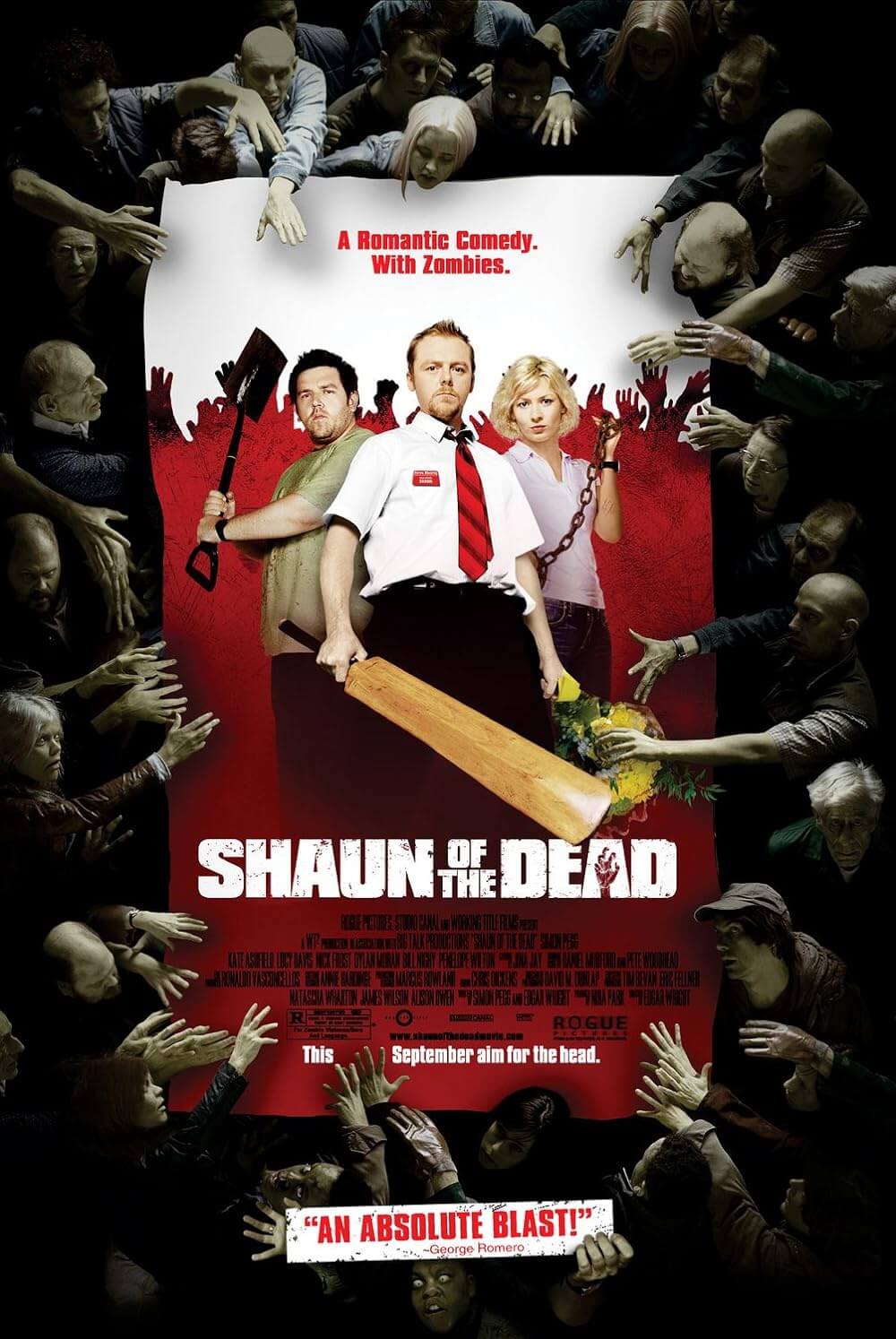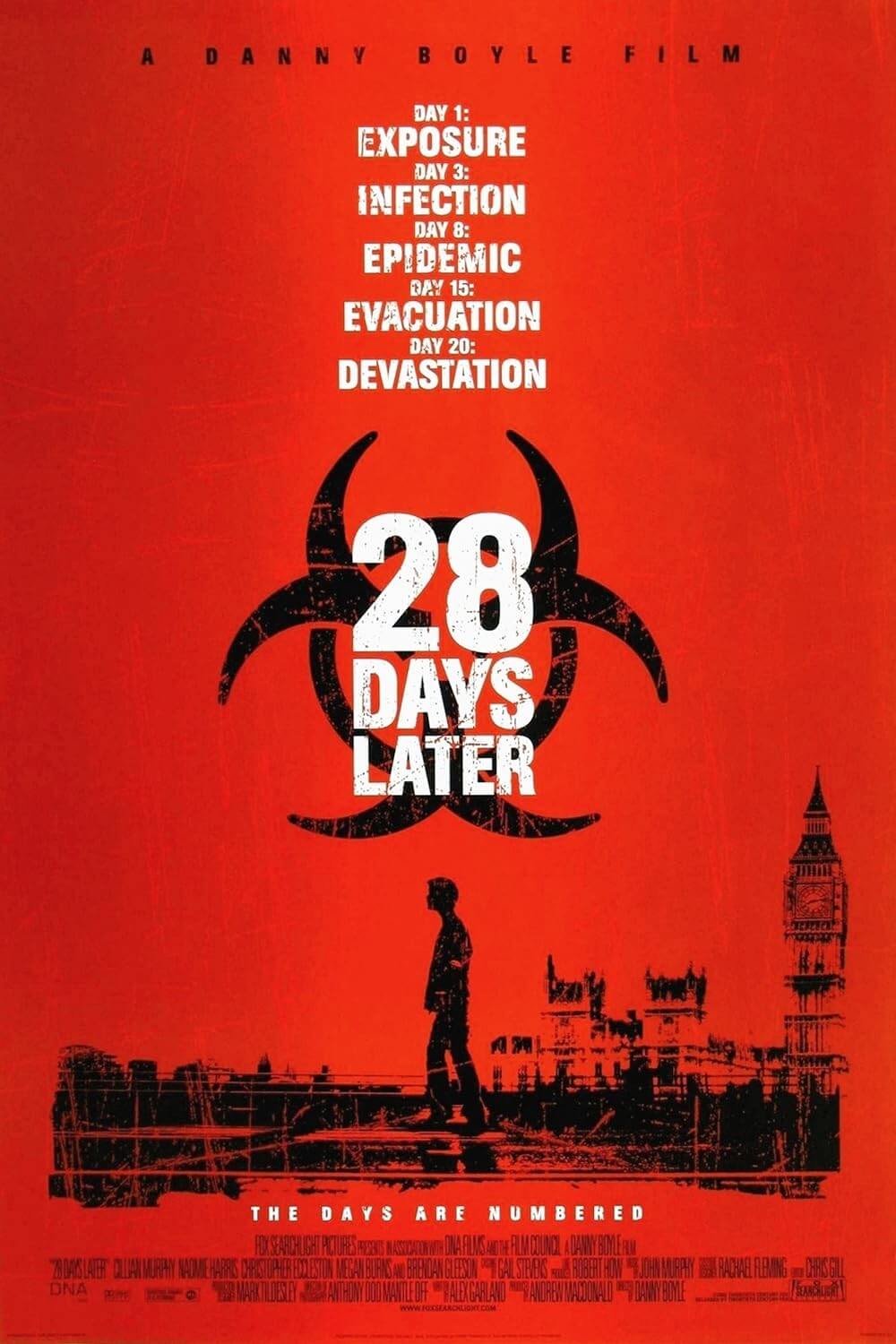Reader's Choice
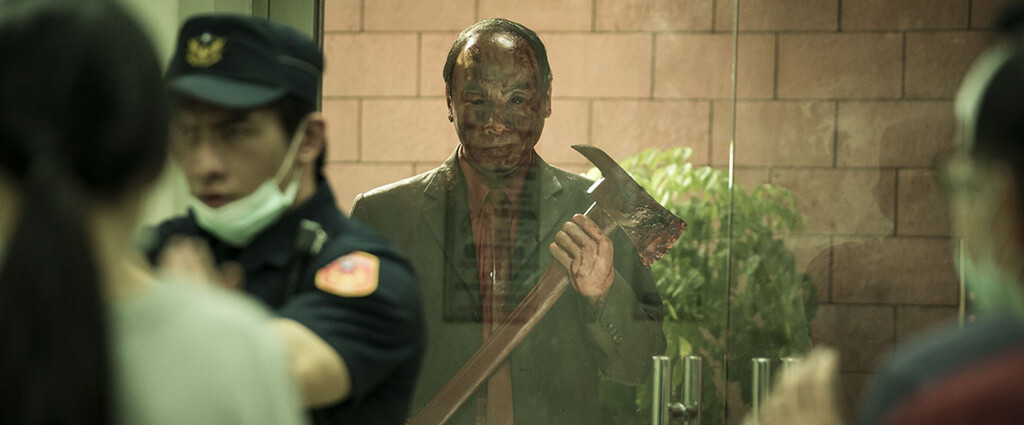
The Sadness
By Brian Eggert |
If you have limits, The Sadness will push them. If you think you can handle gory movies, it will make you question your resolve. And if you have a sensitive gag reflex, the film will test it. Streaming on Shudder, this Taiwanese horror movie opens with a warning that it “contains graphic and extreme violence/gore.” When a horror-themed streaming service feels obliged to alert subscribers, who are presumably accustomed to watching scary and gory movies, about the graphic content to follow, you know you’re in for it. Canadian filmmaker Rob Jabbaz makes his directorial debut with this upsetting pandemic feature that uses grisly practical effects and gallons of vibrant fake blood for a 99-minute onslaught of violence—stabbings, dismemberments, face-meltings, sexual assaults, and flesh-eating. A dreadful sense of chaos fuels this engine, which drives through a cityscape overrun with infected people, similar to Danny Boyle’s 28 Days Later (2002). Except, these infected delight in satiating their most abject impulses. In contrast to Boyle’s film, The Sadness may not have much to say, but its methods are undeniably visceral to a level that cannot be ignored or overstated.
Inspired by writer Garth Ennis and artist Jacen Burrows’ Crossed comic series, Jabbaz’s screenplay doesn’t offer in-depth characters or an entrenched commentary—though the writer-director is clearly (and rightly) cynical about how humanity responded to COVID-19. The Sadness is a stripped-down survival story that follows a couple trying to reconnect amid unthinkable bedlam. Just after Jim (Berant Zhu) drops off Kat (Regina Lei) at the subway station for work, he realizes the world has been overrun by the Alvin virus—a seemingly innocuous flu that has mutated into a rabies-like strain. Before it mutates, however, people dismiss the warning signs, call it a hoax, and blame its “convenient” presence on an upcoming election. Later, there’s no time to point fingers because everyone’s too busy running for their lives. The eyes of those infected form into black and red orbs, the eyelids swell and appear puffy, and the tear ducts ooze pus down the face. They become crazed killers who chase and taunt their victims with disturbing and vile threats.
The premise and tone recall both versions of The Crazies (1973, 2010), so perhaps The Sadness should be called “Homicidal Sadistic Maniacs,” to quote one character. The zombie-like infected move in small groups and tear their victims to shreds in dreadful ways. Those they don’t slaughter, they infect. But it’s how they delight in their behavior that frightens most. They know what they’re doing, and it gives them perverse pleasure. After “Civil Emergency” warnings flash on televisions, a voice of authority, infected, fills the loudspeakers around Taipei, issuing warnings before cackling in a nightmarish aural wave. Jim sneaks away from the infected, but all around him, he hears their disembodied maniacal laughter and screams from their victims, causing a claustrophobic soundscape. Elsewhere, on a subway across the city, Kat deflects the come-ons of an older businessman (Tzu-Chiang Wang). Soon, an infected man unleashes a mass stabbing, spreading the virus on the crowded train. And for most of the film’s remainder, Kat flees the now-diseased businessman, who pursues her, promising to violate her in deviant ways.
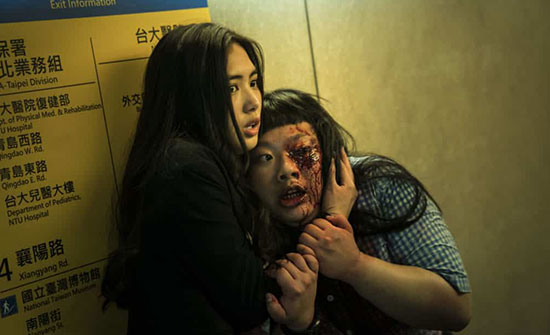 The Sadness fatigues and strains the viewer with its endless barrage of savagery, largely because the people at IF SFX Art Maker craft such convincing bloodshed. Whereas gory movies such as George A. Romero’s Dawn of the Dead (1978), Peter Jackson’s Dead Alive (1992), and last year’s PG: Psycho Goreman treat their blood and guts with cartoonish glee and colors, which allows the viewer a certain distance from what’s depicted, Jabbaz hews more toward realism. Though it would be a stretch to call the film realistic, every bitten-off nose, eaten brain, and smashed face has a naturalness that heightens our revulsion. There’s also a hint of one-upmanship at work, as though Jabbaz hopes to out-gore the exploding head from David Cronenberg’s Scanners (1981) or Tom Savini’s entire career. Add to this the depiction of blood orgies and sexual violence (including an eye socket scene that no one needed), and The Sadness perpetuates a state of queasy disgust.
The Sadness fatigues and strains the viewer with its endless barrage of savagery, largely because the people at IF SFX Art Maker craft such convincing bloodshed. Whereas gory movies such as George A. Romero’s Dawn of the Dead (1978), Peter Jackson’s Dead Alive (1992), and last year’s PG: Psycho Goreman treat their blood and guts with cartoonish glee and colors, which allows the viewer a certain distance from what’s depicted, Jabbaz hews more toward realism. Though it would be a stretch to call the film realistic, every bitten-off nose, eaten brain, and smashed face has a naturalness that heightens our revulsion. There’s also a hint of one-upmanship at work, as though Jabbaz hopes to out-gore the exploding head from David Cronenberg’s Scanners (1981) or Tom Savini’s entire career. Add to this the depiction of blood orgies and sexual violence (including an eye socket scene that no one needed), and The Sadness perpetuates a state of queasy disgust.
Watching Jim and Kat navigate scene after scene of horrid violence, you can’t help but fear for them. Jabbaz doesn’t leave you at a distance with his repellent viscera but pulls you inside each moment, even as you recoil. Along the way, the director’s thin plot never gives you the chance to question the story’s logic or notice its simplicity; it’s too busy turning your stomach over for that. Still, somewhere inside this nasty piece of work is a message about the lizard-brained impulses of the human beast. “You are just like me,” says one infected to Kat, “violent and depraved.” The notion that somewhere inside the heads of the infected, inside of everyone, lies a sick impulse that only requires a virus to unlock it, provides a truly unsettling outlook. Along with a dour ending that reflects the film’s bleak worldview, The Sadness seems to be titled after a realization that humanity is a stupid, self-destructive, and animalistic species that deludes itself into thinking it’s civilized.
Jabbaz has designed this film to press your buttons and exhaust your capacity to view carnage. The right audience for this sort of thing is limited; it will even prove too much for many horror fans, unless they’re part of the subculture that delights in shattering their comfort zones. Indeed, there are those who enjoy the endurance test of films that feel wrong and transgressive. How depraved can it get? The more, the better. The Sadness is unique today because it harkens back to an era of exploitation that sought to defy boundaries of representation and taste, particularly in regard to gore and sexual violence. And yet, it’s incredibly well shot and acted, whereas many low-budget exploitation films from the 1970s and 1980s looked cheap and rough. It’s rare to see the envelope pushed in such a well-crafted film, where the foremost objective is to supply even the most experienced gorehounds with cinematic violence they won’t soon forget. So while I may never feel the need to watch The Sadness again and cannot call the experience a pleasant one, I must acknowledge that the film achieves its objective.
(Note: This review was originally suggested on and posted to Patreon on June 29, 2022.)

Thank You for Supporting Independent Film Criticism
If the work on DFR has added something meaningful to your love of movies, please consider supporting it.
Here are a few ways to show your support: make a one-time donation, join DFR’s Patreon for access to exclusive writing, or show your support in other ways.
Your contribution helps keep this site running independently. However you choose to support the site, please know that it’s appreciated.
Thank you for reading, and for making this work possible.
Brian Eggert | Critic, Founder
Deep Focus Review


